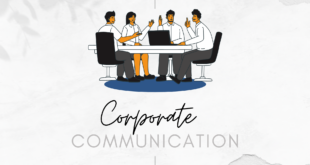As a business executive, it’s important to make sure your office facility is running seamlessly, and observing proper facility management should be first and foremost in improving the efficiency of your enterprise. There is a lot to consider in this regard, so it’s important to learn how to properly handle the tasks that are involved in facility management. In the long run, this will result in greater productivity and allow for greater cost control. Here is a guide to help you keep track of your facility operations and make necessary improvements.
1. Make full use of workspace

If you are renting out commercial space, you need to make sure that every area is fully utilized, as effective space utilization can lead to greater savings. Vacant spaces cost money, so it’s important to make the most out of any space you have. These spaces can serve as storage rooms, recreational areas, or training facilities. You can also come up with an office design that makes use of every available space. Consider workstations that allow employees to move as they see fit for added flexibility.
2. Plan a comfortable office environment

The way an office facility is planned out has a considerable impact on workplace productivity. As modern businesses begin to view cubicles as being outdated, they are opting for more lax and dynamic workspaces with ergonomic features. Considering the fact that today’s workforce consists of tech-savvy millennials, businesses will have to rethink their office designs in ways that align with the lifestyles and work ethics of this generation. Expect communal tables and lounge-style work areas to dominate today’s office facilities. Deciding whether or not to follow these trends is on you, but it does help your employees a great deal if you transform your office space in ways that bring high levels of comfort and mobility.
3. Work closely with your facilities management team

Ensuring that your office facility is running on par with your expectations isn’t a task you can handle alone. You need a team of professionals who specialize in various aspects, from IT infrastructure maintenance to regulatory compliance. Your decisions over who to hire will depend on the size and complexity of your business. In case your business is involved in heavy industry, your facilities management team should be composed of people with experience in maintaining heavy equipment and handling workflow. With the right people by your side, you won’t have to worry about handling the most technical parts of running a business facility.
4. Save costs through an energy audit

Apart from maintenance, a good bulk of your utility costs go towards energy usage. Small and medium enterprises won’t have problems with energy bills for the most part. However, as businesses grow and acquire more space and equipment, there will also be a sharp increase in energy consumption. Not only will this entail higher energy expenses, but it also puts your organization under regulatory oversight.
Businesses will need to be mindful of their carbon footprints, so it’s always best to determine the amount of energy your facility uses and make improvements that will cut energy utilization dramatically. These may include replacing outdated bulbs and purchasing appliances with Energy Star certification. Other ways you can reduce energy consumption include setting a schedule for turning on lights and using an automated HVAC zoning system.
5. Set a budget for physical upgrades

Over time, you may feel the need to upgrade your office facility. This requires a large reserve of resources, especially if the work consists of aesthetic improvements and opportunities for expansion. You need to plan out how you are going to allocate your resources on specific upgrades that will benefit the organization in the long run. As with any other investment, you need to be cautious when it comes to selecting improvements. This would mean conducting a needs analysis among your employees. What are the issues they are facing that hamper efficiency? How do you resolve these issues and add to the facility’s lifetime value? These are decisions you just can’t make overnight, so consider reaching out to a business development consultant who can lead you towards the right course of action to take.
6. Come up with contingency plans

Considering the experience that many enterprises went through during the height of the COVID-19 pandemic when employees were required to work remotely, there is always a need to prepare for a crisis or disruption in the workplace. What happens when your business is forced to undergo extensive downtimes due to power outages? What do you do when there is an outbreak of an infectious disease within the facility?
It is hard to imagine these scenarios, but you need to ensure business continuity by implementing preventive measures. This would mean coming up with workflows and forming crisis teams who are tasked with managing personnel and securing essential infrastructure during a disruption. This way, it will be easier for your organization to bounce back once the dust has settled.
7. Maintain all tech assets

New technology plays an important role in helping you achieve greater efficiency. It matters a lot to compare a Microsoft EA vs CSP for all PCs and work-related devices onsite and improve your data security infrastructure since these are also part of the office facility. Apart from that, you should look into automation and cloud computing and see how they will fit your business. You can also use special software that monitors your equipment and provides insights that will serve as the basis for adopting new tech. Your business needs to keep up with changing technological trends and implement new tools and approaches within the facility. These days, you cannot afford to be left behind while your competitors are staying current.
Maintaining an office facility is a daunting part of running a business. Then again, it pays to know how you will be able to run a smooth operation and generate long-term value.
 Imagup General Magazine 2024
Imagup General Magazine 2024



